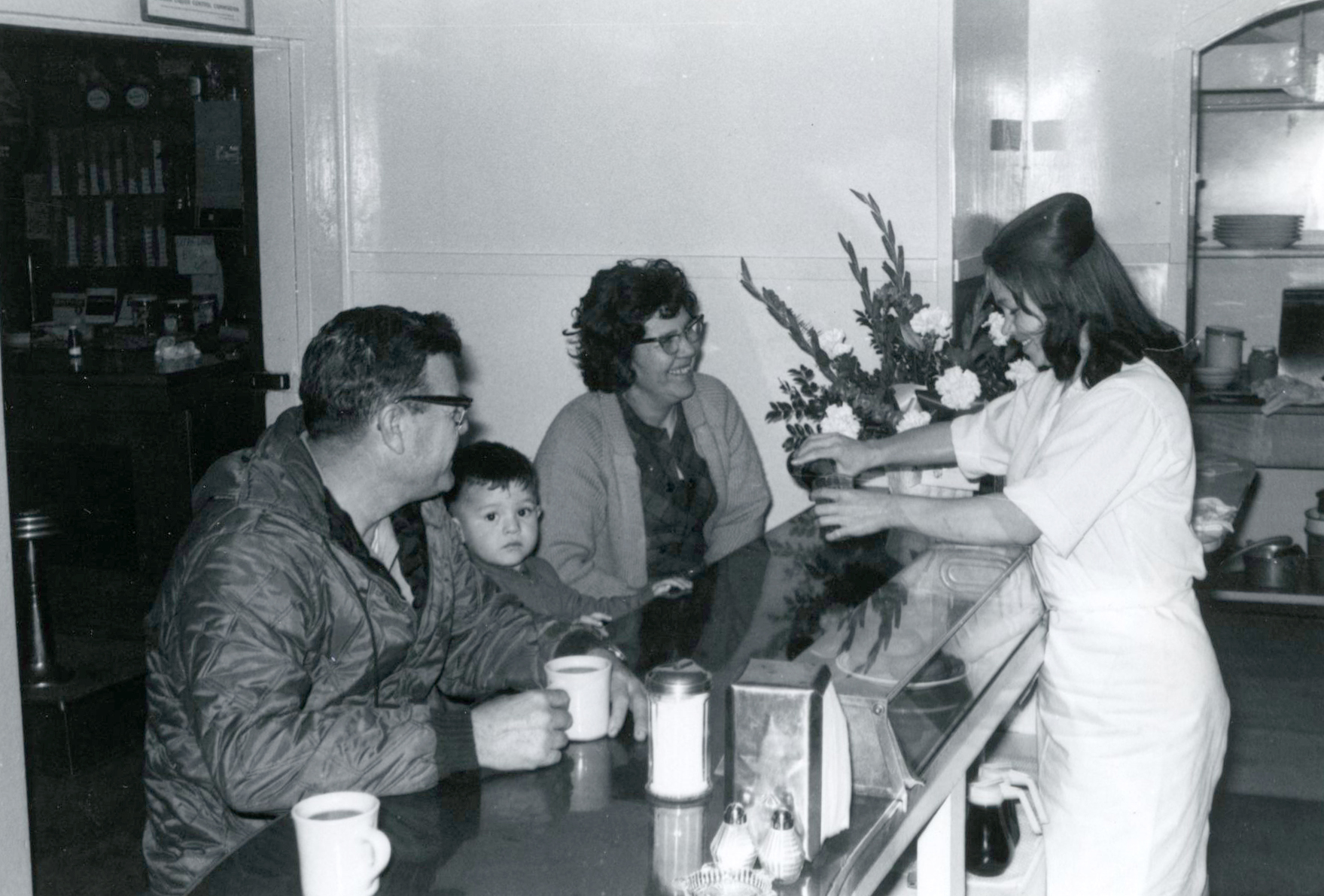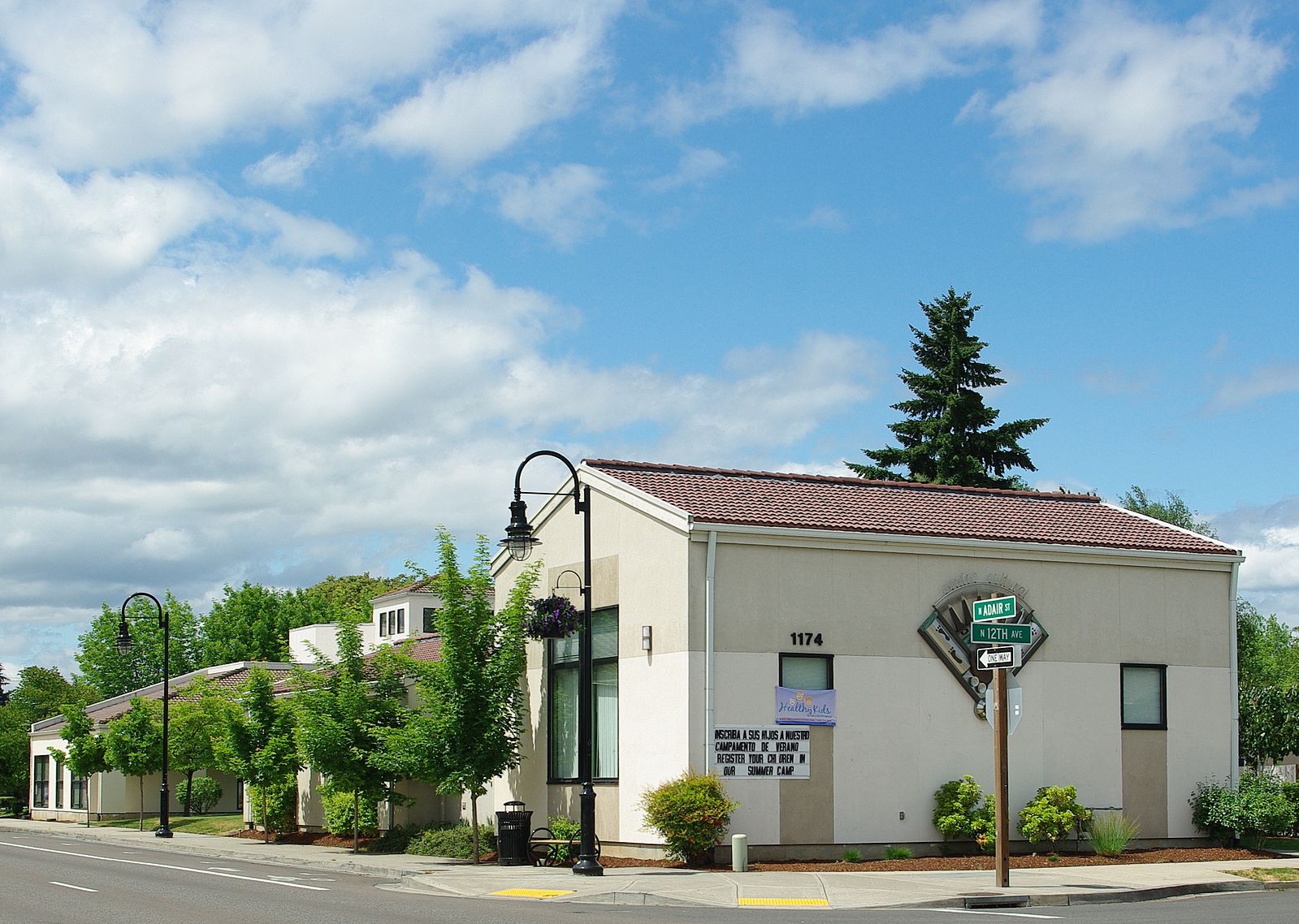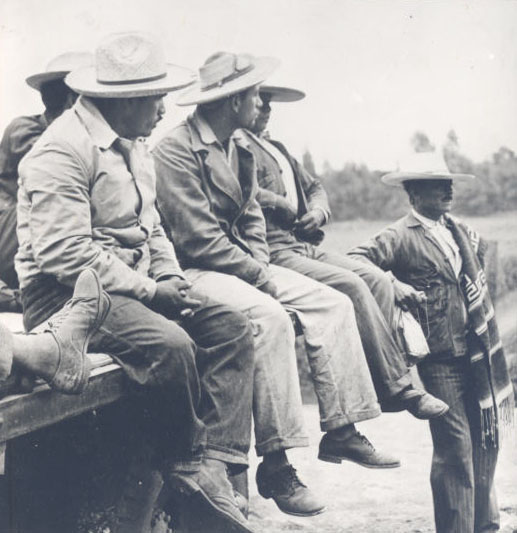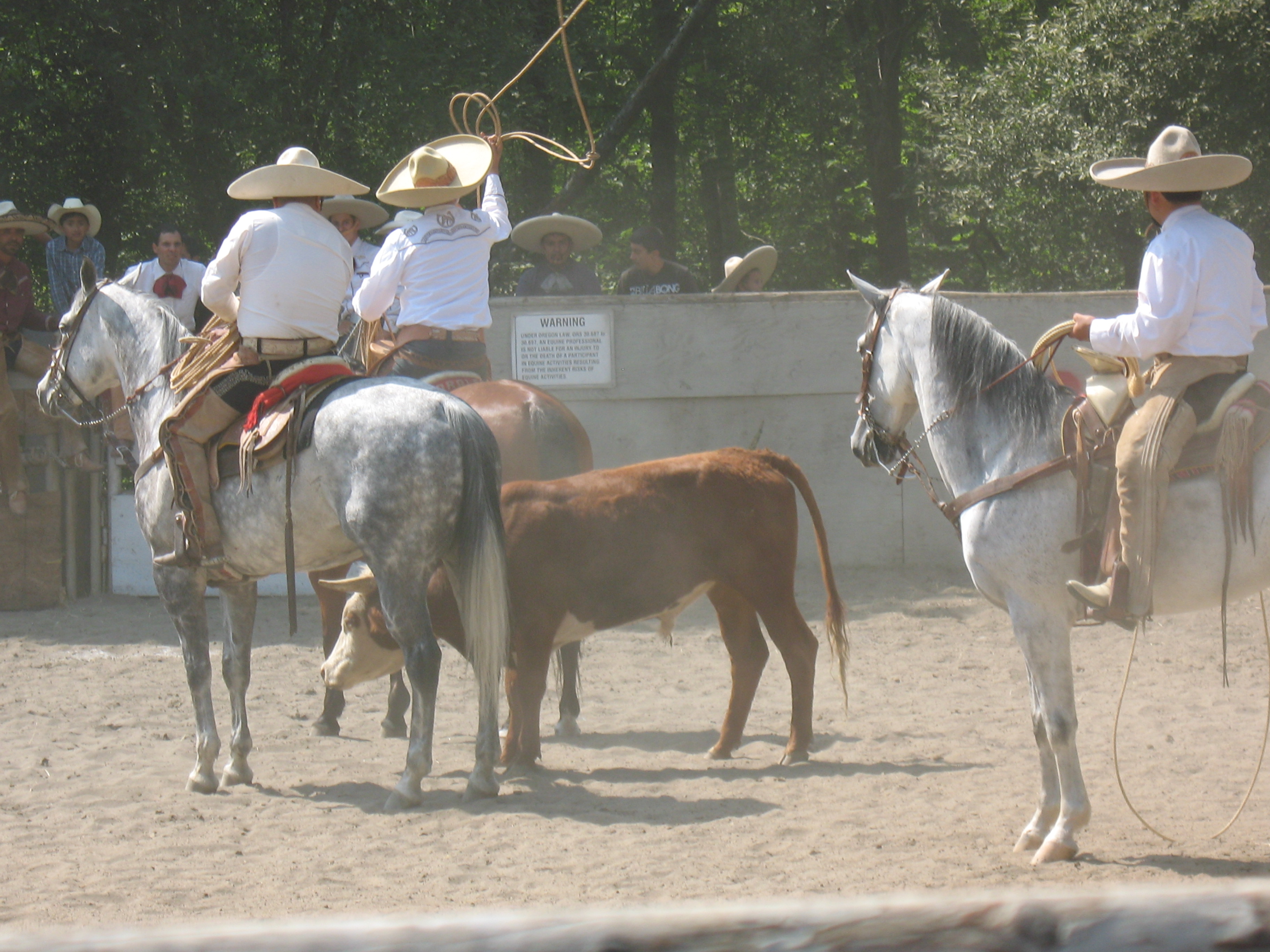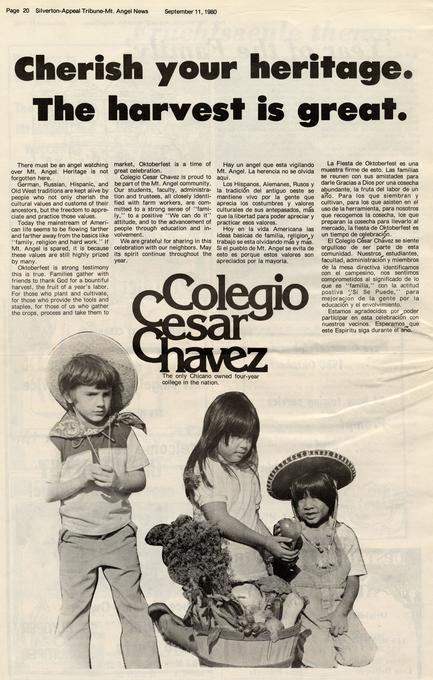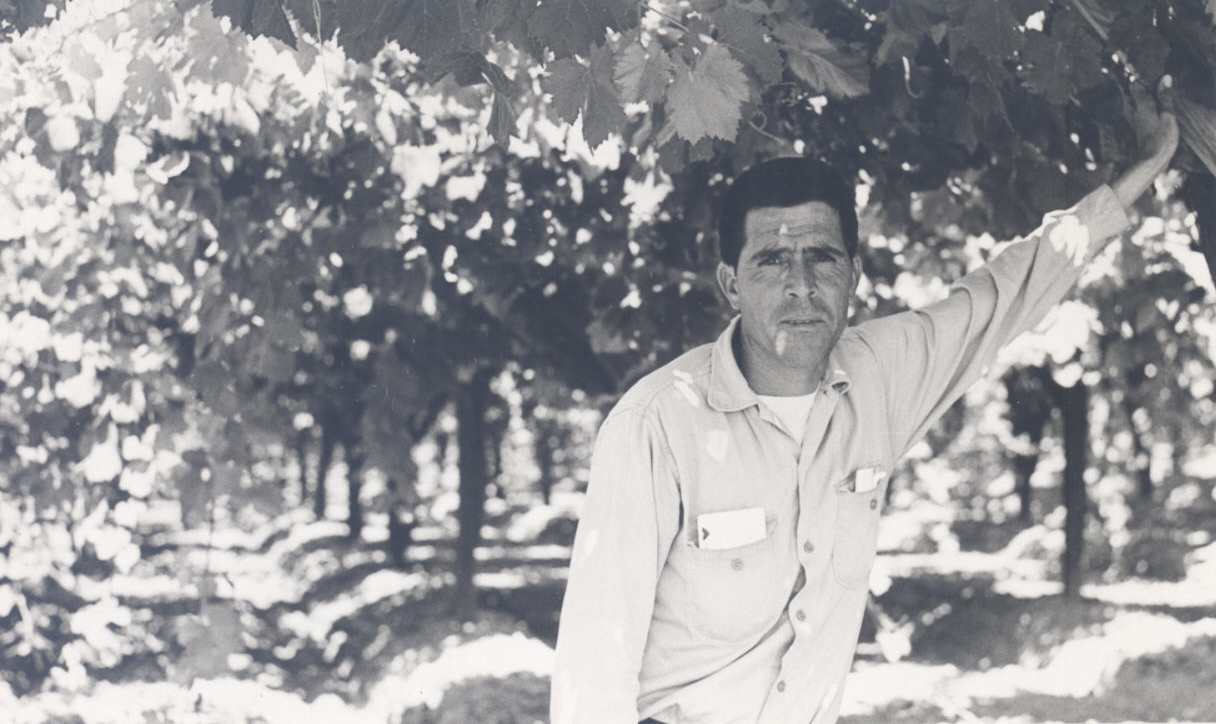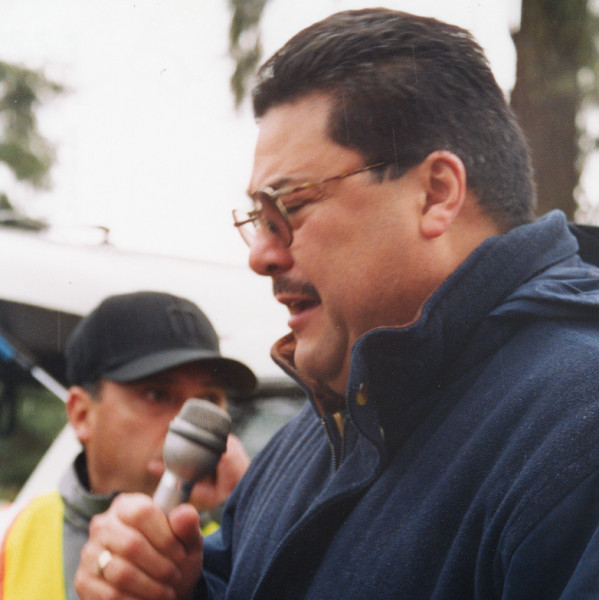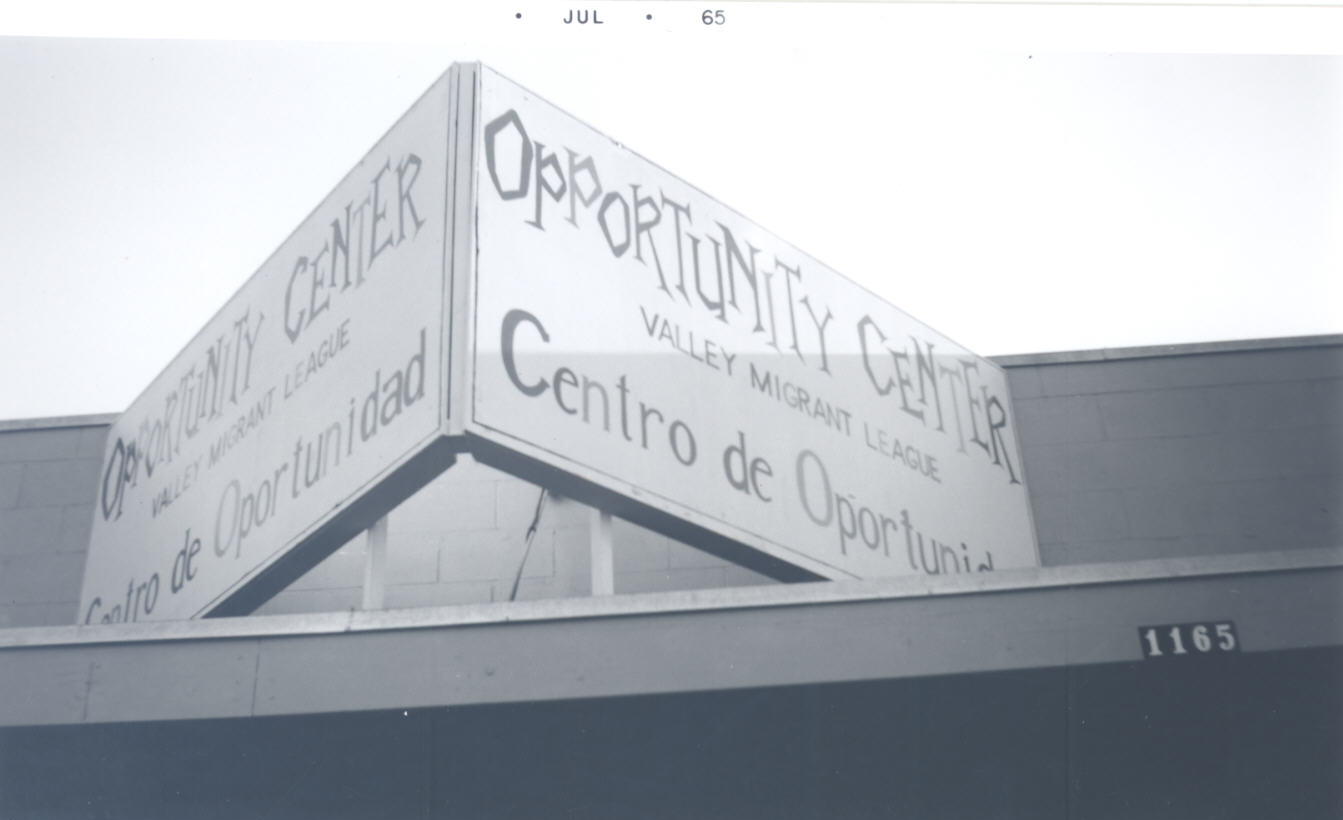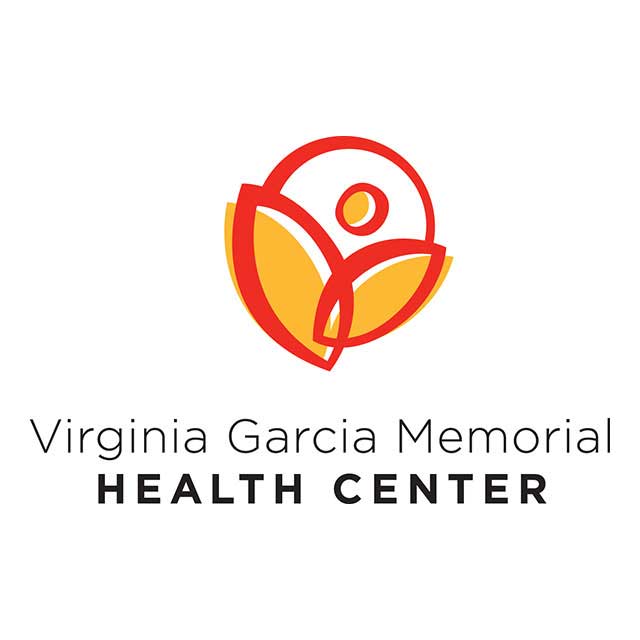Centro Cultural de Washington County is an educational and cultural center in Cornelius that offers aid and other services to Latinos. During World War II, many Latino workers came to the region as part of the Bracero Program, and thousands of Latino agricultural workers migrated to the Pacific Northwest after the war. By the 1960s, economic incentives and the hardships of migration had compelled a small number of families to settle year-round in Washington County, where they started Centro Cultural in 1972.
Centro Cultural began as a community collaboration. Ruby Ely, the director of the Valley Migrant League (VML) in Hillsboro, wanted to give more power to farmworkers and migrant families, and she hired Jose Garcia and José Jaime, students at Mount Angel Seminary, to work with about a dozen Mexican families in Washington County. That collaboration led to the creation of Los Amigos Club, formed in 1966 to help families purchase homes and pay for family emergencies.
In Oregon, Latinos saw the creation of physical cultural centers as a vital step toward fostering their communities by tailoring Chicano Movement activism to meet local demands. Such centers had been established many years earlier in Colorado and in the states bordering Mexico. The need for a building where Los Amigos Club could offer classes and host social events became increasingly important, and people began to plan and raise funds for an educational and cultural center. In designing the Hillsboro center, Los Amigos Club was influenced by Centro Chicano Cultural, which had opened in Marion County in 1971. When the Centro Cultural de Washington County opened in 1972, members dissolved the Los Amigos Club to focus on the new organization.
Centro Cultural de Washington County offered cultural, vocational, educational, language, and activity classes for the community. Enedelia Hernandez Schofield, whose parents Emilio and Hortencia “Tencha” Hernandez were instrumental in fundraising for and leading Centro, said that it became “a place where you could come and share what music you wanted to hear, what food you wanted to eat and stories that you had in common about going back to Texas.” Its founders were instrumental in 1975 in creating the Virginia Garcia Memorial Health Center, which provided medical treatment for Spanish speakers and those without insurance or money to pay hospital bills.
Similar experiences encouraged the founders and leaders of Centro to expand the scale and scope of their outreach as the county’s Latino population grew to thousands of individuals and families from many national, economic, and cultural backgrounds. Centro Cultural continues to provide services to immigrants and to promote friendship and understanding between Latinos and other Washington County residents.
Currently, Centro Cultural de Washington County provides education, arts and culture, immigration support, and community outreach at two facilities. The main center in Cornelius offers adult education and youth development classes and community wellness programs, and it coordinates and hosts cultural festivals such as Dia de los Muertos and El Grito-Festival Comunitario. In 2017, in partnership with the City of Hillsboro, Centro Cultural opened the Centro de Prosperidad, an Economic Empowerment Center in Hillsboro. Prosperidad offers educational training, business development, and job training skills to the local community. Centro Cultural de Washington County receives support from corporate, public, and community partners and from private donations, and it partners with local government and public agencies to provide educational and cultural programs to the county at large.
-
![]()
Mary Metcalf serves Emilio and Hortencia “Tencha” Hernandez.
Courtesy Oregon Hist. Soc. Research Lib., Org. Lot. 74, box 1, folder 1
-
![]()
Centro Cultural de Washington County.
Courtesy M. O. Stevens
Related Entries
-
![Bracero Program]()
Bracero Program
The Mexican Farm Labor Program, also known as the Bracero Program, was …
-
Charrería
Charrería is a Mexican sport that involves skillful roping, talented ho…
-
![Colegio César Chávez]()
Colegio César Chávez
Colegio César Chávez, located in Mt. Angel in the lower Willamette Vall…
-
![Latinos in Oregon]()
Latinos in Oregon
The arrival of Latinos in Oregon began with Spanish explorations in the…
-
![Pineros y Campesinos Unidos del Noroeste (PCUN)]()
Pineros y Campesinos Unidos del Noroeste (PCUN)
Founded in April 1985, the Pineros y Campesinos Unidos del Noroeste (th…
-
![Valley Migrant League]()
Valley Migrant League
From 1965 until 1974, the Valley Migrant League (VML) helped Oregon mig…
-
![Virginia Garcia Memorial Health Center]()
Virginia Garcia Memorial Health Center
The Virginia Garcia Memorial Health Center was established in 1975 to p…
Related Historical Records
Map This on the Oregon History WayFinder
The Oregon History Wayfinder is an interactive map that identifies significant places, people, and events in Oregon history.
Further Reading
Gamboa, Erasmo. Mexican Labor and World War II: Braceros in the Pacific Northwest, 1942–1947. Seattle: University of Washington Press, 1999.
Maldonado, Carlos S. “Vivemos de la Tierra: Agricultural Workers in the Pacific Northwest.” In The Chicano Experience in the Northwest, eds. Carlos S. Maldonado and Gilbeto Garcia. Dubuque, Iowa: Kendall-Hunt, 1995.
Schofield, Enedelia Hernandez. Oral history interview, August 28, 2013, Portland, OR. Washington County Museum.
Sprunger, Luke. "’Del Campo Ya Pasamos a Otras Cosas (From the Field We Move on to Other Things)’: Ethnic Mexican Narrators and Latino Community Histories in Washington County, Oregon." Ph.D. diss., 2014. http://pdxscholar.library.pdx.edu/open_access_etds/1977.
_____. “This is Where We Want to Stay: Tejanos and Latino Community Building in Washington County.” Oregon Historical Quarterly (Fall 2015): 278–309.

